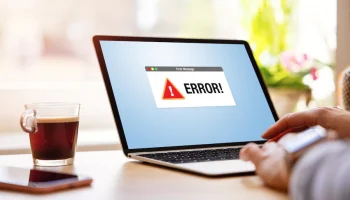Protecting your server from a DDoS attack can be quite tricky. Here’s what you need to know about it.
Thanks to the emergence of the internet, our world has become highly hyperconnected. Now, we can see, do and operate anything from anywhere on the planet as long as we have a proper net connection. But, unfortunately, the internet isn’t really the blessing we thought it to be.
Although it has made our lives much, much easier, it has also given birth to quite villainous stuff. And amongst them, one of the most annoying creations is DDoS or Distributed Denial of Service. Let’s keep reading to know more about it.
What Is Ddos?
Before you learn about fortifying your defense, let us decrypt what DDos actually is.
Talking in a simplified manner, A DDoS attack has features almost like a digital stampede. In this case, an army of compromised malicious traffic floods your system’s server with an overwhelming count of fake and illegitimate requests.
This, in turn, renders the entire infrastructure to become unable to serve genuine users. Such a deluge of web traffic can also exhaust server resources and lead to a slower downtime.
If you don’t take care of the situation right away, it will become impossible to operate on the same server after a while.
DDoS Attack: Types That Are Worth-Knowing
Although all DDos Attacks are overwhelming for a system, hackers might implement different strategies for serving their malicious intentions. Let’s have a look at the major DDoS attacks:
-
Attacks Related To Application-Layer
Application-layer attacks usually target and harm a particular app, not the entire network. Here, the hacker generates a long-listed HTTP request that might exhaust the recorded server’s capacity to respond. Cybersecurity professionals calculate app-layer attacks in RPS or requests per second. Web apps, cloud solutions, and internet-collected apps are the most common trigger points for these types of attacks.
-
Protocol Attacks
Protocol-based DDoS attacks have the possibility of exploiting weaknesses in a specific protocol, especially the ones governing internet communications. There are two very common protocol DDoS attack types: SYN floods and Smurf DDoS. The only adept way of calculating protocol DDoS attack is bits per second or packets per second.
-
Volumetric Attacks
The volumetric attack consists of a target’s precise bandwidth along with fake data requests. It further creates congestion in the entire network. The hacker’s traffic blocks eligible users from accessing solutions, thereby reducing traffic flowing in and out. UDP floods, ICMP flood and DNS amplification are some of the most common types of volumetric DDoS attacks.
How Do You Protect Yourself from a DDoS Attack?
Defending your server fortress against a DDoS attack can be quite difficult. Once it hits you, it will be almost impossible for you to recover from it, no matter how hard you try.
Therefore, it becomes important for any server owner to protect their system at the earliest. In this section, we have shared a few of them and explained how they work elaborately.
So, without any further ado, let’s get started with it.
Solution – 1: Invest in Robust Network Infrastructure
Building a sturdy foundation is key to any defense strategy. Ensure your network infrastructure is resilient enough to withstand high traffic loads. Distribute your server across multiple data centers and employ load balancers to evenly distribute incoming requests. This helps minimize the impact of an attack by spreading the load across multiple servers.
Solution – 2: Implement Traffic Monitoring and Detection
Early detection is crucial in thwarting DDoS attacks. Implement traffic monitoring tools to detect any unusual patterns or sudden traffic spikes. These tools can help you identify potential attack sources and patterns, allowing you to take immediate action.
Solution – 3: Deploy a Web Application Firewall (WAF)
A WAF acts as a shield between your server and incoming traffic. It filters out malicious requests and traffic anomalies, blocking potential DDoS attacks. Configure your WAF to set thresholds for normal traffic and automatically blacklist suspicious IP addresses.
Solution – 4: Enable Rate Limiting and CAPTCHA
To mitigate the impact of DDoS attacks, consider implementing rate-limiting mechanisms. Set thresholds for the maximum number of requests a user or IP address can make within a specified time frame. Additionally, using CAPTCHA (Completely Automated Public Turing test to tell Computers and Humans Apart) can help differentiate between real users and bots, minimizing the risk of automated attacks.
Solution – 5: Collaborate with a DDoS Mitigation Service
Partnering with a reputable DDoS mitigation service can be a game-changer. These services specialize in identifying and mitigating DDoS attacks, providing you with the expertise and infrastructure to handle even the most potent attacks. They can divert malicious traffic, ensuring uninterrupted service for your legitimate users.
Final Solution: Keep Your Software Up to Date
Regularly update your server software, including your operating system, firewall, and applications. Software vulnerabilities can be exploited by attackers to amplify the impact of DDoS attacks. So, stay vigilant and apply patches/updates promptly to stay one step ahead.
An Alternative Solution
Apart from these, if you want, you can also opt for Oplink’s DDoS protected servers. It’s cheaper, easier to sustain, and quite efficient as well.
There are also quite a few protective features available in the same that can prevent the DDoS attacks like a pro. Even if something gets through your server, it will be deleted instantly.
Therefore, if you’re looking for something robust and efficient for your office, opting for this alternative will be pretty beneficial for you. If you want to know more about the server or the features it comes with, make sure to get connected with Oplink today!
The Final Say!
Defending your servers from DDoS attacks requires a multi-faceted approach. By combining robust infrastructure, proactive monitoring, and collaborative defense mechanisms, you can fortify your digital fortress against these menacing threats. Remember, it’s not a matter of “if” but “when” an attack may occur.
Stay informed, stay prepared, and protect your servers like a seasoned cyber warrior. Together, we can keep the digital realm secure!
Read Also:




























